Extreme weather events
What are extreme weather events and why are there ever more of them?
During 2020 the number of extreme weather events multiplied and according to the UN, by way of the Intergovernmental Panel on Climate Change (IPCC), humankind is one of the principal culprits. However, specifically speaking, to what type of phenomena are we referring? From heatwaves that dry out the ground and accentuate wildfires to hurricanes and droughts, among others, which we shall deal with below.
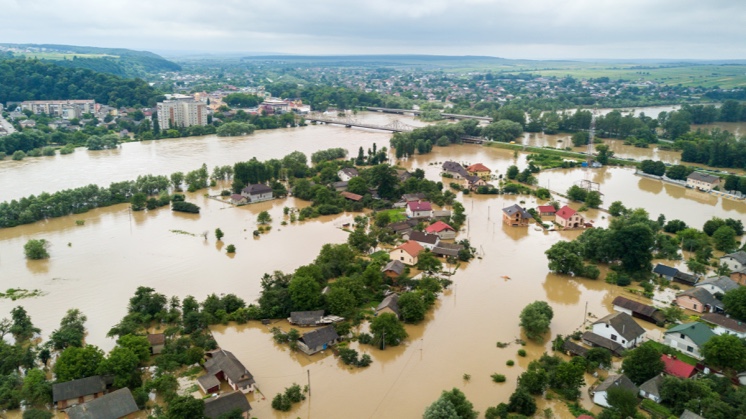
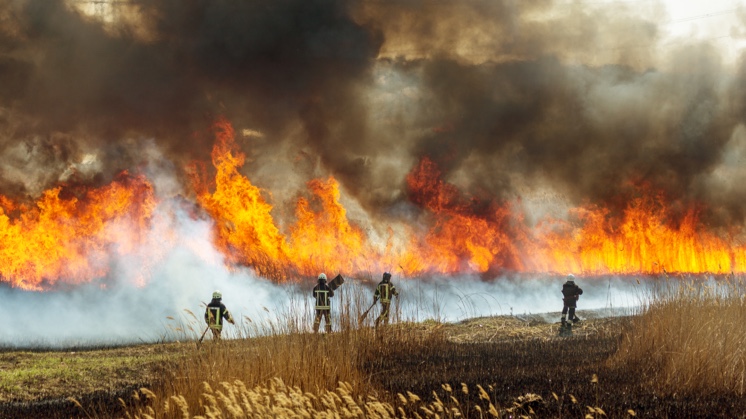
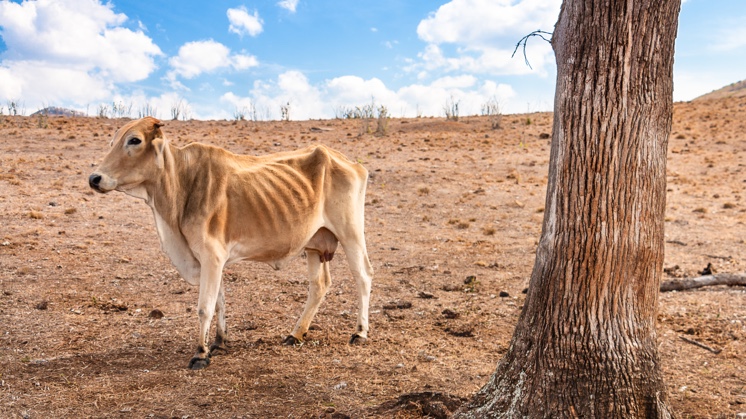
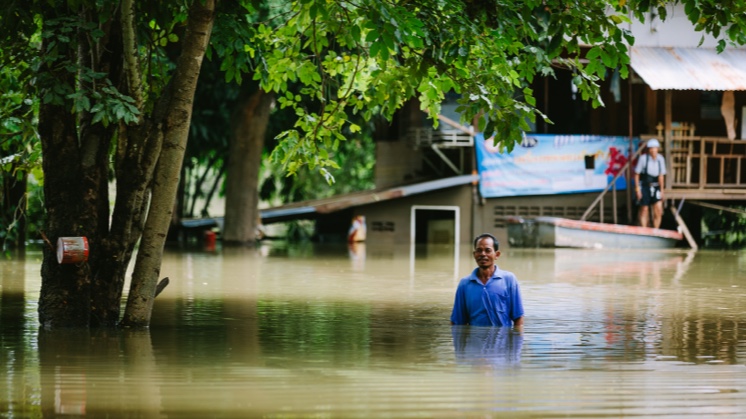

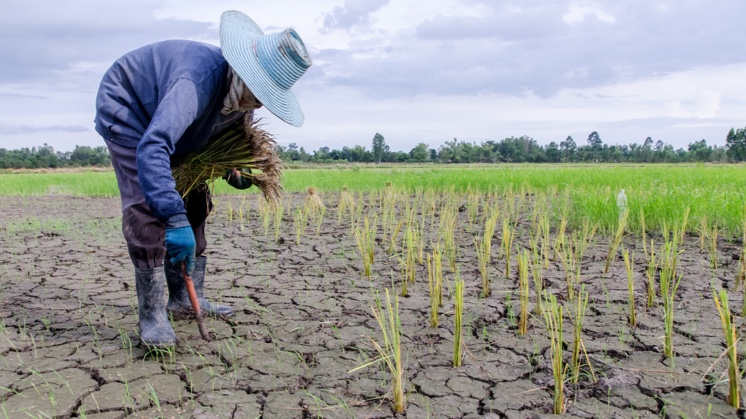
In the summer of 2021 an extreme heatwave in the eastern Mediterranean — with temperature of around 47 ºC in Greece lasting several days — was followed by a series of wildfires that devastated thousands of hectares. The shocking images brought back memories of those of merely a year earlier from Australia. And the fact is that over the last few years the disasters caused by extreme weather phenomena have been an increasingly habitual occurrence, be it in the form of heatwave, flooding or drought.
Climate change and extreme weather events
Why are there ever more extreme weather events? The Intergovernmental Panel on Climate Change (IPCC) has no doubts as to the reason for this, and in its most recent report, published in August 2021, once again pointed its finger squarely at climate change. It also blamed humankind for the increase of greenhouse gas (GHG) emissions which, in turn, are partly responsible for the rise of temperatures worldwide.
The panel of experts warns that if CO2 emissions are not reduced over the next few decades, the increase of temperatures on a worldwide level will exceed the threshold established in the Paris Agreement. As a result, extreme weather phenomena will continue being more widespread, the Arctic icecap will shrink — for example, ice floes and glaciers — sea levels will rise and the loss of biodiversity will be inevitable. UN Secretary General Antonio Guterres sums the situation up as follows: "The alarm bells are deafening and the evidence is irrefutable".
Types of extreme weather events
Extreme weather events can be grouped together as follows:
 Heatwaves
Heatwaves
Extreme heat, in the form of this phenomenon that involves high temperatures lasting for several days, has become increasingly frequent and intense in the majority of the Earth's regions since 1950, according to the IPCC's report.
 Cold snaps
Cold snaps
Unlike heatwaves, this phenomenon, which involves several days of low temperatures, has become less frequent, according to the IPCC. However, this does not mean the end of unusual situations, such as Storm Philomena, which brought Spain to a standstill for several days.
 Tropical cyclones
Tropical cyclones
According to the IPCC, these have become more frequent over the last four decades. Furthermore, they are proving more destructive as they result in higher category hurricanes. All of this could well be related with an increase of the surface temperature of the sea.
 Droughts
Droughts
The lack of rain in certain areas of the world, such as the Horn of Africa, is increasingly pronounced, thereby prolonging this phenomenon and forcing thousands of people to emigrate and become climate refugees. In addition, water scarcity can also result in violent clashes.
 Torrential rains
Torrential rains
At the same time as there may be less general rainfall due to climate change, the rain which does fall might become more intense, resulting in typhoons capable of causing extremely destructive flooding and swollen watercourses.
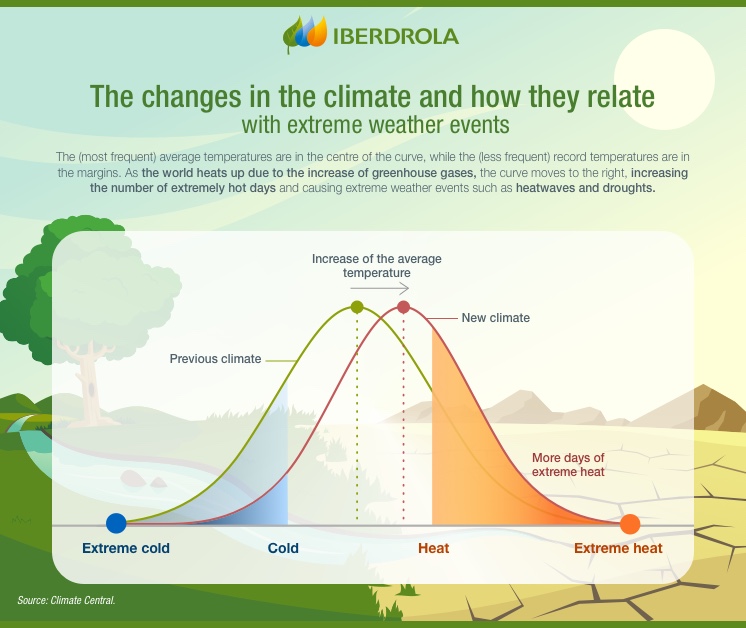
The consequences of extreme weather events
Extreme weather events have serious consequences with respect to both human and animal life. Some of these are reviewed below:
 Wildfires
Wildfires
Heatwaves, which seriously dry out the ground, often trigger virulent wildfires that affect entire communities, destroying homes and damaging health due to smoke inhalation. Furthermore, the impact on ecosystems is such that some of them never recover.
 Flooding
Flooding
The IPCC highlights the high probability that monsoon rainfalls will increase in the medium and long term, especially in South and South-east Asia, causing terrible floods. This will have especially serious consequences for coastal cities.
 Famines
Famines
Those sectors that depend on a certain degree of climate stability, such as agriculture, are seeing their production and performance levels undermined, thereby generating food insecurity in certain areas. The EU points out that these phenomena, in turn, could well cause a deterioration in water quality.
 Climate migrations
Climate migrations
According to Oxfam, more than 20 million people per year are forced to abandon their homes as a consequence of the effects of climate change, which include extreme weather phenomena.
In the majority of cases, these consequences are severe losses of human life and economic ruin. According to the 2021 Climate Risk Index prepared by the Germanwatch organisation, eight of the ten countries most affected by these phenomena have low-income economies. With that in mind, the United Nations Environment Programme (UNEP) estimates that, by 2030, adapting to climate change and tackling the damages it will cause will cost developing countries between 140 and 300 billion dollars a year. What's more, these events also affect ecosystem biodiversity, putting numerous species under threat.
Examples of extreme weather events
In recent years, there has been an upsurge of extreme weather events that have wreaked havoc in different parts of the world. In adition to the aforementioned wildfires that devastated the eastern Mediterranean, the most recent of these include:
- The Zhengzhou storm. The word "storm" doesn't begin to describe what happened in this Chinese city. On 19 July of 2021 the equivalent of one year's rain fell in a single day, forcing the evacuation of around 200,000 people.
- Floods in western Germany. The continuous rains that fell on this region of the country in July 2021, especially in North Rhein-Westphalia — its most populous State — and in Rheinland-Palatinate, left a swath of destruction and hundreds of people dead and missing.
- North American heatwave. More than 1,200 daytime and 1,500 night-time high temperature records were broken in different US and Canadian cities between 24 and 30 June of 2021, according to the National Oceanic and Atmospheric Administration (NOAA), caused by a heatwave. This phenomenon was followed by a terrible succession of wildfires.
- Drought in Siberia. In 2021 one of the world's coldest regions experienced its driest summer of the last 150 years according to the Russian authorities. This resulted in a record number of wildfires and, in particular, in an unstoppable mega-wildfire that consumed over a million and a half hectares.




